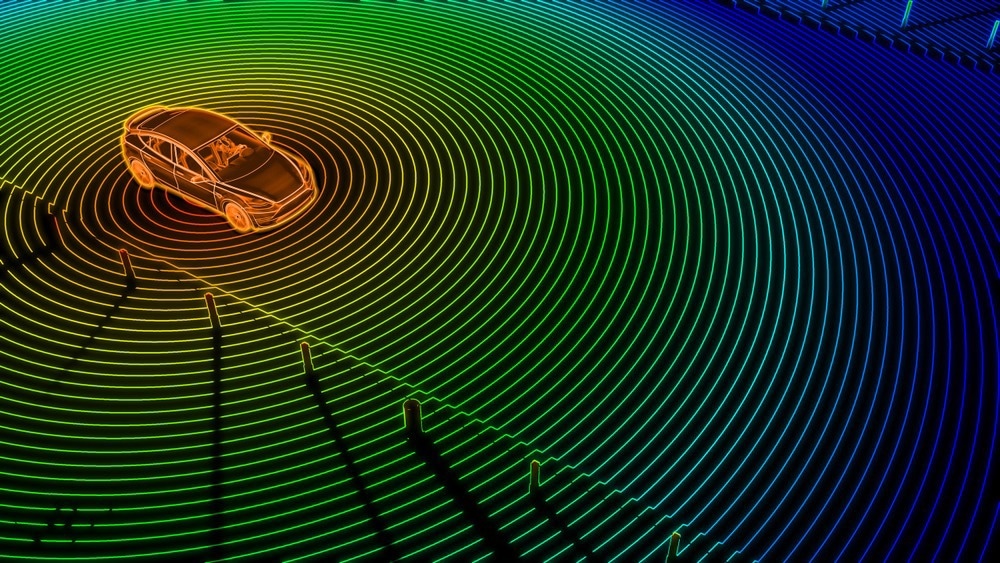In an article published in the journal Sensors, researchers analyzed the requirements for various key LiDAR metrics, including laser safety, angular resolution, field of view, and detection range.

Study: Requirements for Automotive LiDAR Systems. Image Credit: temp-64GTX/Shutterstock.com
LiDAR Used to Drive Vehicles
Researchers and manufacturers have developed light detection and ranging (LiDAR) systems to assist in driving activities for both human and autonomous driving due to their capacity to precisely measure distances and identify objects almost independent of the illumination conditions, By detecting the lag between optical signal transmission and reception, LiDAR devices determine the distance. Depending on how the irradiance is distributed, the system may be categorized as either mechanical scanning with a collimated beam or flash irradiation setups with a diverging irradiance.
LiDAR System Parameters
Numerous studies have recommended the requirements for certain LiDAR system parameters, including detection range, field of view (FOV), and angular resolution. No general conclusion can be drawn from these studies. A thorough analysis of these impacting elements is required since the specific solution relies on the boundary conditions and needs. Because there is little energy loss from the emitter to the target, collimated beam LiDAR systems, for instance, may achieve a large detection range. However, to comply with laser safety rules, the collimated beam must be guided with a sizable pulse repetition rate, which limits the output energy.
Aim of this Study
This study assesses the range of detection for various beam radiation patterns, including flash irradiation and scanning techniques. As a standard for the specification and construction of LiDAR systems, the ADAS functionalities are considered when determining the angular resolution, FOV, and detection range requirements.
ADAS and its Features
The purpose of ADAS is to support the driver by helping with longitudinal and lateral driving activities, such as braking and steering, to improve driving comfort and safety. A common ADAS feature is adaptive cruise control (ACC), which modifies the subject vehicle's speed to maintain a safe distance from the car in front of it. In addition, the forward vehicle collision warning system (FVCWS), another crucial ADAS feature that concentrates on longitudinal driving responsibilities, keeps track of the speed and distance of the vehicle in front of it to avoid collisions altogether or at least lessen their severity.
The purpose of ACC is to regulate driving speed to adjust to a car in front of you. The following equation uses the maximum driver-selectable set speed vmax and the maximum selectable time gap τmax to compute the ACC function's maximum needed detection range dmax.
dmax=τmax•vmax
Forward Vehicle Collision Warning System (FVCWS)
The forward vehicle collision warning system (FVCWS) function is categorized by the capacity to identify obstacles in curves with a certain radius along the trajectory of the subject vehicle. System classifications I, II, and III denote curve radii of >500 m, >250 m, and >125 m. The study suggests that depending on the system class, the minimum distance may range between 5 m and 10 m, and it must be able to detect a preceding vehicle with a lateral offset of up to 20% of its width.
Angular Resolution
The smallest angle separation between two objects that LiDAR systems can discern defines the angular resolution. The angle between two adjacent scanning points for scanning LiDAR systems and between two adjacent detector pixels for non-scanning LiDAR systems is referred to as the angular resolution. For LiDAR systems, angular resolutions of 0.1°–0.2° are ideal. Object identification techniques based on LiDAR point clouds must be considered when selecting the necessary angular resolution since it directly influences the detection performance.
Significant Findings of the Study
The need for crucial LiDAR measurements is examined in this study. LiDAR systems need a minimum detection range of 200 m for collision avoidance and to prevent the worst-case scenario of forwarding crashes on motorways with a 140 km/h speed limit. Field of view for LiDAR systems of 32.6° x10.2° is required to identify cars ahead of them in curves with a minimum radius of 125 m for the ACC and FVCWS functions. The PointPillars method determines the required angular resolution, and a confidence level of 0.5 is used. Assuming quadratic-shaped detector pixels, a LiDAR system needs an angular resolution of 0.04°x 0.04° to identify motorcyclists at a long range (200 m).
The shortest eye-safety distance (NOHD) of all studied system designs—0.03 m in this study's example—is achieved by LiDAR systems utilizing blade irradiation when taking laser safety into account and applying certain fundamental assumptions about the variables in range equations. The high pulse frequency severely restricts the maximum available output power for spot irradiation LiDAR systems, lowering the detection range. Under the assumption of eye safety, lowering the pulse frequency may assist in obtaining a more expanded detection range.
Reference
Zhuoqun Dai, Alexander Wolf, Peer-Phillip Ley, Tobias Glück, Max Caspar Sundermeier and Roland Lachmayer. (2022) Requirements for Automotive LiDAR Systems. Sensors. https://www.mdpi.com/1424-8220/22/19/7532
Disclaimer: The views expressed here are those of the author expressed in their private capacity and do not necessarily represent the views of AZoM.com Limited T/A AZoNetwork the owner and operator of this website. This disclaimer forms part of the Terms and conditions of use of this website.